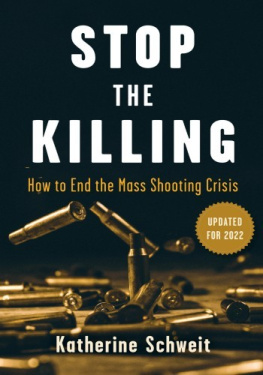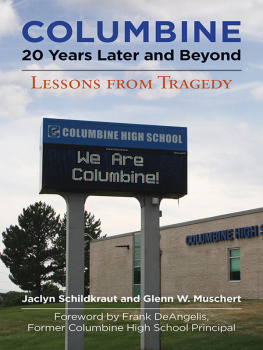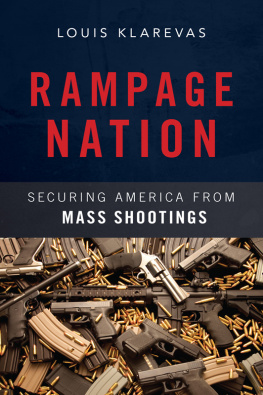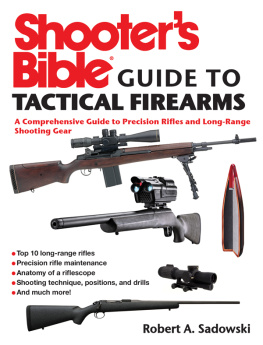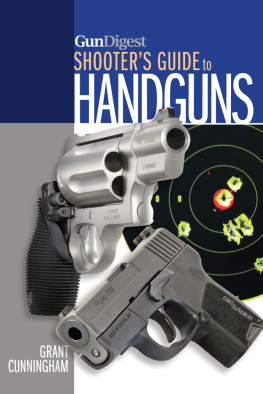Ms. Katherine Schweit is a licensed attorney and retired Federal Bureau of Investigation special agent who spent nearly five years as the executive responsible for the FBIs active shooter efforts. After the tragedy at Sandy Hook Elementary School, she joined the select group in Washington, DC, working on violence prevention with thenVice President Joseph Biden and his team. She was an author of the FBIs seminal research, A Study of 160 Active Shooter Incidents in the United States Between 2000 and 2013, and was part of the crisis team responding to incidents including the shootings at the Holocaust Memorial Museum, the Pentagon, and the Navy Yard in the Washington, DC, area. She is the executive producer of the award-winning film, The Coming Storm, widely used in security and law enforcement training in the United States and relied upon by the Department of State worldwide. This work earned her a second US Attorney Generals Award.
Before joining the FBI, Ms. Schweit was an assistant states attorney in Chicago. Before opening her own consulting firm, Schweit Consulting LLC, she was the director for security training at a Fortune 300 company. A onetime print journalist, she has published extensively, including opinion pieces in the New York Times and Chicagos Daily Herald. She is a recognized expert in active shooter matters, crisis response, workplace violence, and corporate security policies and often provides on-air television commentary after mass shootings. She regularly speaks at professional, government, and private organization events. She is a member of the Association of Threat Assessment Professionals, the International Association of Chiefs of Police, and the International Association for Healthcare Security and Safety and is a Certified Compliance and Ethics Professional. She is currently a member of the adjunct faculty at DePaul University College of Law and Webster University. She lives in Virginia, outside of Washington, DC.
To my beautiful girls, Sarah and Fionna, who encouraged me to write this book and stuck by me through it all.
To honest editing by Bob Bobrow and the patience shown by his lovely wife, Leslie, despite other pressures in their lives. To my longtime friend and advisor, Michael Kortan, whose steady professionalism improved the language in this book immeasurably.
To many at the FBI but most importantly James A. Green, who carried the weight of guiding the FBIs Active Shooter program after I left and brought his knowledge of tactics to further hone how to stop the killings. To my other FBI and law enforcement team members during those critical years after Sandy Hook who made miracles happen and hid all misgivings about my demands: Deb Cryan, Fay Campos, David Knoff, Jerry Castleberry, Dennis Jahnke, Pete Lapp, Michael McElhenny, Kathryn M. Crotts, Ashley Mancik, and, most particularly, Andrew Ames. And to wise guidance from James Yacone and Chris Combs.
To the brave members of state, local, and tribal law enforcement who run toward the danger and risk their lives every day to save others during mass shootings.
To my good friends Jim and Gabrielle Patton, who ignored me so I could meet my deadline and then celebrated with a Negroni when the publisher took charge. For the encouragement and support of those around me, most importantly, Stephanie and Al Miller, Michele Yaroma and Tim McCants, Stavriana Dimopoulos and Farrell Brody, and Allison Adams Bousson.
To Sharon Wray for early guidance, my agent, Elaine Spencer, The Knight Agency, and the team at Rowman & Littlefield Publishing Group.
Finally, to my sister and sparring partner, Maribeth Coulombe, and my dear friend Carol Okamoto, who checked in with me nearly every day in the final months of finishing this bookkeeping me laughing, working through challenges, and listening to me prattle on endlessly. Their generosity must be repaid.
On December 14, 2012, an anxiety-ridden twenty-year-old shot through the front door of Sandy Hook Elementary School and killed twenty children and six women in five minutes.
The shooting, eleven days before Christmas, stunned the world. The news media subsumed Newtown, Connecticuts 27,000 residents, instantly filling area hotels and restaurants to begin the inevitable weeks of memorial services and funerals.
Headlines told the story:
Our Hearts Are Broken TodayChicago Tribune
Beautiful Little KidsSavannah Morning News
Evil Visited This Community TodayNews Journal (Delaware)
Massacre of InnocentsRepublican-American (Litchfield, Connecticut)
Why?Vindicator (Youngstown, Ohio)
UnthinkableTampa Bay Times
Gunman Massacres 20 Children at School in Connecticut; 28 Dead Including Killer, read the New York Times, the page blanketed by a terrifying five-column picture of a teacher leading little students to safety. Who Would Do This to Our Poor Little Babies? it said beside a photo of thenPresident Barack Obama as he addressed the nation just hours after the shooting.
Weve endured too many of these tragedies in the past few years. And each time I learn the news, I react not as a President, but as anybody else wouldas a parent, Uncharacteristically and visibly overwhelmed, he paused to wipe away tears welling up and take several breaths of air to compose himself. We felt it.
They had their entire lives ahead of thembirthdays, graduations, weddings, kids of their own. He said that among the fallen were also teachers, men and women who devoted their lives to helping our children fulfill their dreams. So our hearts are broken today.
Like most Americans, I believe the Second Amendment guarantees an individual right to bear arms, the president said. I respect our strong tradition of gun ownership and the rights of hunters and sportsmen. There are millions of responsible, law-abiding gun owners in America who cherish their right to bear arms for hunting or sport or protection or collection. I believe most of them agree that, if America worked harder to keep guns out of the hands of dangerous people, there would be fewer atrocities like the one that occurred in Newtown.
He announced thenVice President Joseph Biden would lead a task force to pursue an aggressive legislative agenda, increase research efforts, and implement twenty-three executive actions designed to curb gun violence.
Within days I joined Mr. Bidens effort, led by his senior policy analyst Maureen Tracy-Mooney; the pressure to find answers was palpable. Little did I know that the following year US Attorney General Eric Holder and I would be discussing our startling findings.
As a special agent with the Federal Bureau of Investigation, I carried a gun. But understanding targeted violence, the kind occurring when an active shooter strikes, was a challenge.
Growing up in Michigan, I handled a gun only a few times and stayed home when classmates went north at the opening of hunting season. Instead, I concentrated on becoming a professional journalist, a bug I never shook after watching the Watergate hearings.
The day after I turned eighteen, I found work at the local daily newspaper, remaining there until I graduated from Michigan State University. A good newspaper job at the Daily Herald took me to Chicago, and before long I had added a law degree from DePaul University College of Law.
An offer to clerk for an appellate court judge led me to a prosecutors job with the Cook County States Attorneys office. Though I worked primarily drug cases, for a time I shared an office with a felony attorney who handled what we called the dead baby cases. I admired her tenacity and told her I couldnt imagine not crying all the time if I worked those horrific cases involving dead children.


